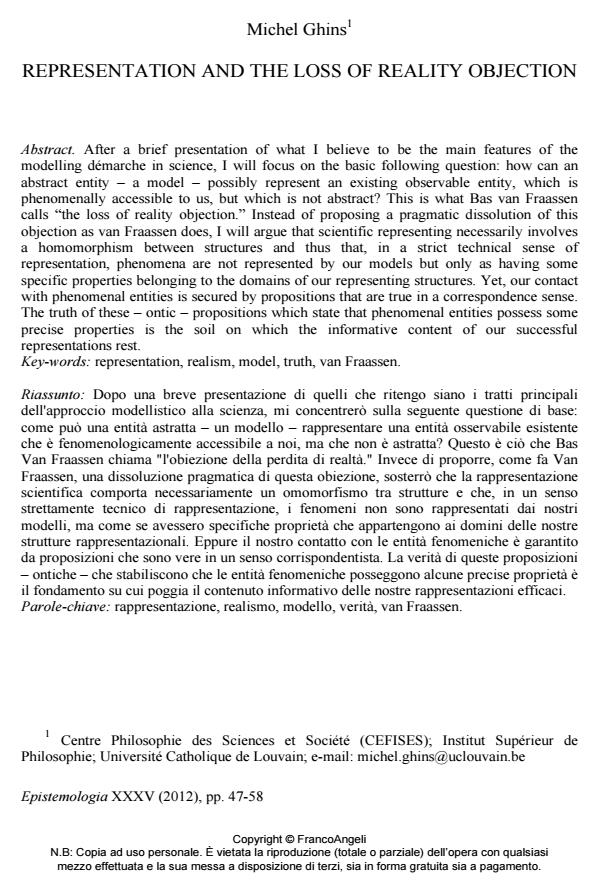Representation and the loss of reality objection
Journal title EPISTEMOLOGIA
Author/s Michel Ghins
Publishing Year 2012 Issue 2012/1
Language English Pages 12 P. 47-58 File size 218 KB
DOI 10.3280/EPIS2012-001004
DOI is like a bar code for intellectual property: to have more infomation
click here
Below, you can see the article first page
If you want to buy this article in PDF format, you can do it, following the instructions to buy download credits

FrancoAngeli is member of Publishers International Linking Association, Inc (PILA), a not-for-profit association which run the CrossRef service enabling links to and from online scholarly content.
After a brief presentation of what I believe to be the main features of the modelling démarche in science, I will focus on the basic following question: how can an abstract entity - a model - possibly represent an existing observable entity, which is phenomenally accessible to us, but which is not abstract? This is what Bas van Fraassen calls the loss of reality objection. Instead of proposing a pragmatic dissolution of this objection as van Fraassen does, I will argue that scientific representing necessarily involves a homomorphism between structures and thus that, in a strict technical sense of representation, phenomena are not represented by our models but only as having some specific properties belonging to the domains of our representing structures. Yet, our contact with phenomenal entities is secured by propositions that are true in a correspondence sense. The truth of these - ontic - propositions which state that phenomenal entities possess some precise properties is the soil on which the informative content of our successful representations rest.
Keywords: Representation, realism, model, truth, van Fraassen.
Michel Ghins, Representation and the loss of reality objection in "EPISTEMOLOGIA" 1/2012, pp 47-58, DOI: 10.3280/EPIS2012-001004